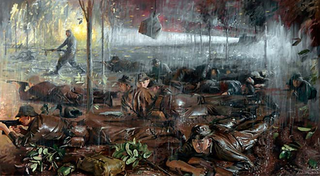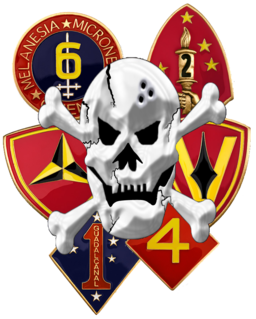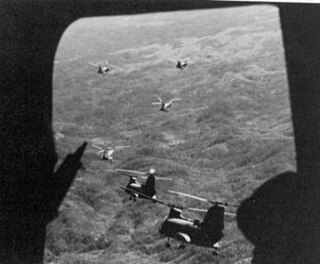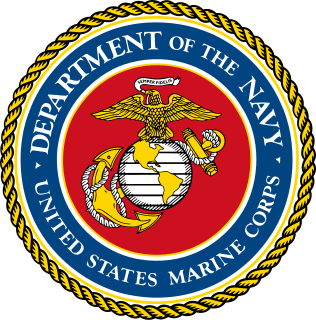Variants
The British armed forces use a similar system subdivided into:
- Preliminaries – This involves the orders group going to the platoon commander and receiving their orders for their section and finding out about their commanders plans for the platoon as a whole. This stage also involves the second-in-command of a section preparing them for battle. This includes all ammunition checks ensuring all of the sections equipment is in working order and that the section is camouflaged and hydrated. This is done from the mnemonic PAWPERSO: Protection, Ammunition, Weapons, Personal Camouflage, Equipment, Radios, Specialist Equipment, Orders
This is done by the section commander. If the second-in-command has any spare time after this he will prepare a detailed model for the briefing of the troops.
- Ground – Now that the section commanders have received orders from the platoon commander they return to their sections to deliver their briefing. He or she will use the model provided for by the second-in-command to give a brief description of the ground on which the mission will take place. He will explain contours and possible cover for the route in and how it will be exploited to avoid enemy detection.
- Situation – This is similar to the American system in that it includes the enemy situation as well as friendly forces situation. When This part of the briefing is given possible enemy-locations, forces, strength, ammunition, weapons, supply routes, watering points, patrol routes, objectives, morale, and motivation.
- Mission – This is a one sentence statement that summarises the mission objectives. For example, The mission to is to conduct a fighting patrol in order to eliminate any enemy positions so that the platoon can keep advancing into enemy territory safely. The mission statement is extremely important as it is more than likely the only bit of the briefing squaddies are bothered to listen to. So make it short sharp and to the point. You must always repeat the mission twice so that any squaddies not paying attention have a chance to catch what it is they are meant to be doing.
- Execution – If a briefing is considered to be a sandwich this would be considered the filling. It should be the longest part of the briefing and will explain in detail exactly what is going to be done under all conditions. This means the first plan of attack and any thing that will be done if the plan is compromised in any way for example if something unexpected happens. The section commander will explain the plan in a series of logical commands. it starts as follows
- Platoon HQ is located on the model
- Enemy position located
- Patrol Form up point located
- Bearing for departure located
- Time out given
- Route to enemy position pointed out
- Any RV points are given according to the ground
- Advanced information on Enemy is given
- Plan of Attack is given
- Location of possible ReOrg given
- Route back in pointed out (always different from route in so not ambushed by enemy)
- Bearing of way into Patrol harbour or Platoon HQ given
- Time Back Given
- Actions on given e.g. action on light during night is to get to ground
- Actions on Vehicle-Light-Ambush-Fire-Separation-Lost-No Comms-Pinned Down-Weapon Stoppage-Run Out Of Ammo- etc
- An Official list does exist and it is much longer however these are the major features.
- Service Support – This is to do with all equipment that is needed specifically for the mission this ranges from Personal clothing to technical possibilities of any possible support weapons. This is a quick section which allows each member of the section to know exactly what to bring. Remember if you are giving orders for a recce patrol remind your section to wear warm kit because if they die from the cold it is on you. This should have all been prepared by the second-in-command during the prelims but you have to check.
- Command and signal – This section involves mainly two things everything to do with radios and all passwords and code names and signals which may be used during the patrol.
The radio section involves radio checks and ensuring the frequency is correct and that any change in frequency happens at exactly 23:59 right before midnight. Call signs for the radio network are handed out just remember that the platoon commander is always zero. the majority of the time the sections go in alpha numerical order e.g., section 1's point man is 1,1 second person is 1,2 and the third is 1,3 and so on through all three section for the platoon. It is important that voice procedures are followed so that no information can be gained by the enemy over the radio waves.
The password and code name section for the command and signals orders involves giving out the password for the return journey so that the sentry does not shoot you when you return. This should only be a last resort as if the enemy hear it they could pretend to be a part of the section. Generally a sentry knows roughly what time you are coming back at due to the platoon commander informing him.
- Questions – These are to and from the patrol to ensure they understand what you said. Remember when asking a question post pause pounce. So give them a question see who looks like they know the answer then ask someone who looks nervous because they were not paying attention.










